Animals of many different species often suffer terribly in times of war, especially those who are directly involved in battle, such as dogs and horses. Often, however, these humble, fiercely loyal creatures prove that they too are capable of not only courageously doing their various duties under periods of terrible stress, but that they also possess the capability for acts of great valor and bravery – acts that save not only their own lives, but the lives of the men they are working with.
One such dog was Judy, an English pointer, who earned the Dickin Medal for her heroism during WWII.
Judy was born in Shanghai in 1936, a time of great turmoil across the world. Japan would begin its invasion of China in just over a year, while in the West, Hitler’s Nazi Party, having been in power in Germany for four years, were rattling their sabers and preparing for war.
Little did the beautiful little white-and-liver puppy know that she would spend much of her life embroiled in the war that was about to sweep across the length and breadth of much of the known world.
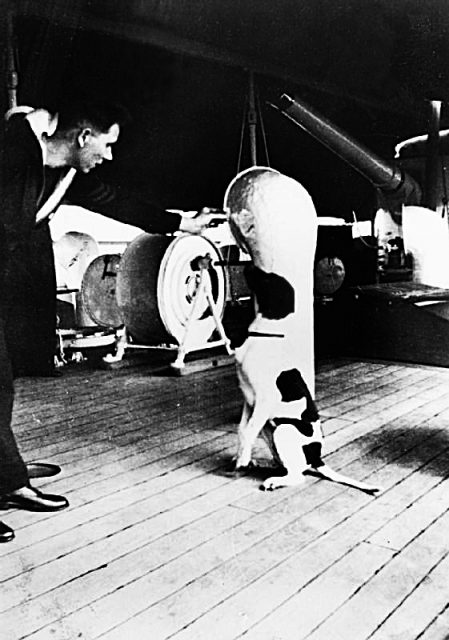
She spent most of her early life as a ship’s mascot for the British Royal Navy in Shanghai. Later, she ended up on the gunboat HMS Grasshopper stationed at Singapore. When the Japanese took Singapore in early 1942, Grasshopper made for the Dutch East Indies, but before the gunboat could reach safety she was attacked by Japanese bombers and sunk in the South China Sea.
Judy survived the sinking of Grasshopper, as did many sailors, but the dog and the men ended up marooned on a small desert island which was devoid of both food and water. Judy, however, possessing far sharper senses than humans, managed to sniff out an underground freshwater spring at low tide.
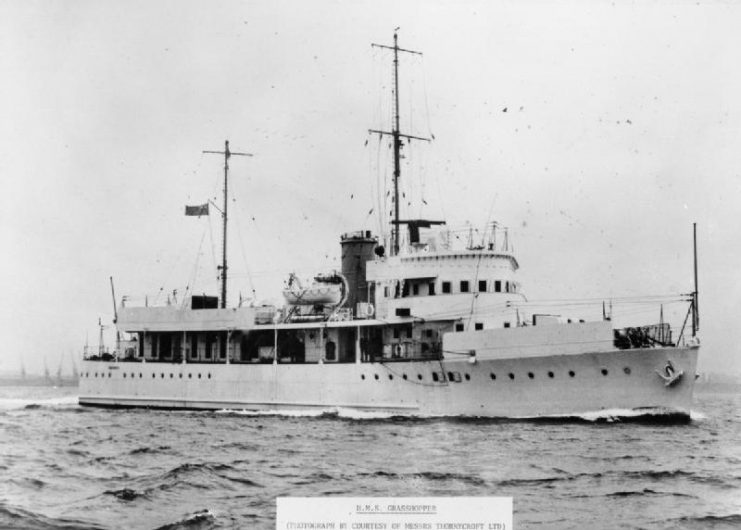
Once she began digging and the clean, potable water started bubbling up from the ground, the men knew they were saved. Judy had proved her worth as a military dog – but this would only be the first time of many that she was to demonstrate her heroism.
The British sailors managed to commandeer a Chinese junk after a few days on the desert island and reached Sumatra. The men, with Judy in tow, hiked over two hundred miles through the jungle.
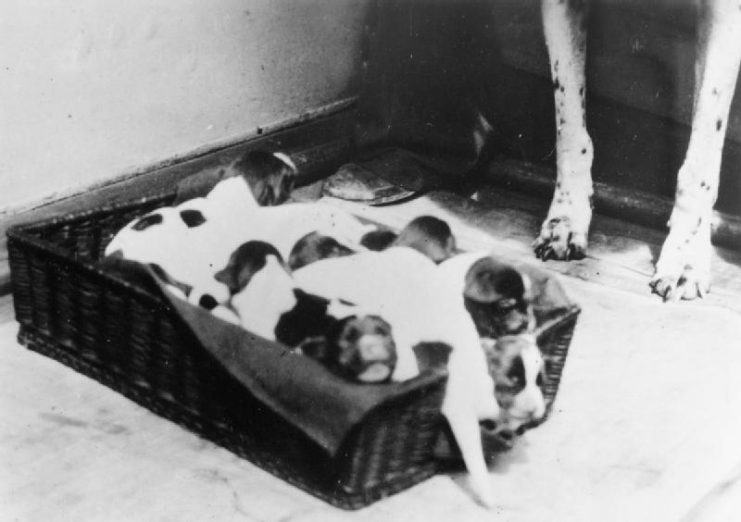
It was not an easy journey and it took the best part of five weeks. The trek was especially traumatic for Judy because she was attacked by a crocodile, but thankfully she survived the attack with only minor injuries.
Ever watchful, she also alerted the men to the presence of a tiger that was stalking them. She and the men were by no means out of danger, though, when they finally made it out of the jungle. Missing the last British evacuation boat by nine days, they ended up in a village controlled by the Japanese. They were captured and taken to a Japanese prisoner of war camp – and Judy, ever loyal, followed them there.
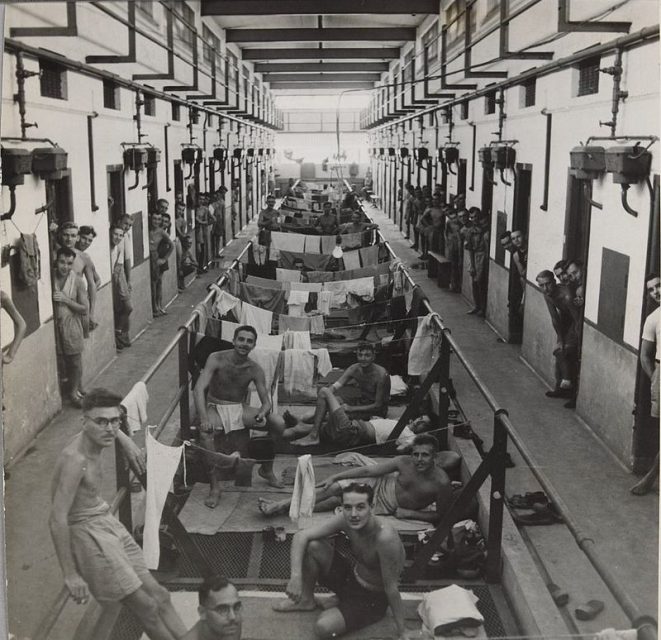
Initially the men were held in a camp at Pedang, but were then moved to Belawan. The men, knowing that their captors would not take kindly to Judy’s presence, kept her hidden under rice sacks in the transport trucks that took them from camp to camp. They finally ended up in the notorious Gloegoer Camp in Medan, where they would be subjected to years of torture, deprivation and brutal forced labor.
In Gloegoer Camp Judy was mainly looked after by a man called Led Searle and Private Cousens. Cousens’ camp task was making leather items, and he would sneak scraps of leather from his work station to feed to Judy. He died, unfortunately, after contracting malaria. Soon Judy was to meet a new friend, though, one who would stay with her for the rest of her life.
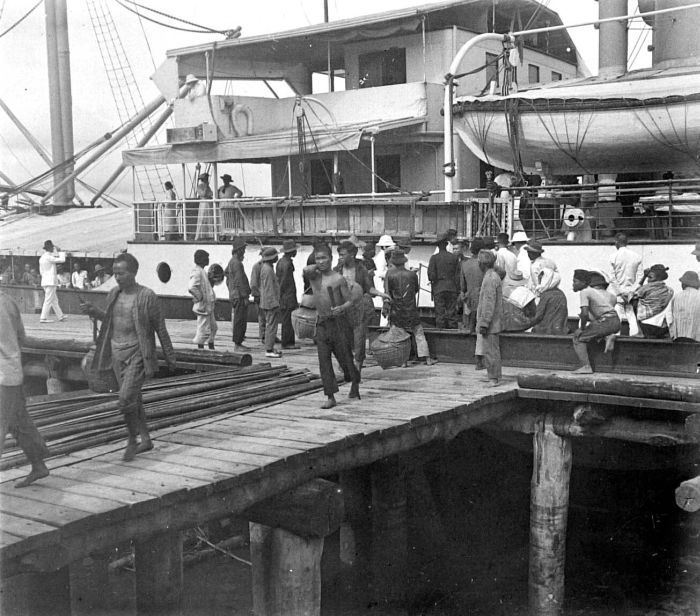
Leading Aircraftman Frank Williams came to Gloegoer Camp in 1942, and he immediately noticed Judy. He also saw that while the prisoners enjoyed having her around, and would feed her scraps of rice and maggots they found in their food, she didn’t really have a specific person who looked after her. He thus took this duty on himself, offering her his entire ration of rice one day. She ate it gratefully, and from that moment on always stayed by his side.
Despite living a life of equal deprivation and misery as the other prisoners, Judy never let her circumstances get her down or dull her attitude. Whenever the Japanese guards started beating one of the prisoners, Judy would jump in, snapping and snarling to try to protect the prisoner – whereupon the guards would turn their anger on her, kicking her and beating her with the butts of their rifles.
Williams realized that, as admirable as her heroic devotion to protecting the prisoners was, it was going to get her killed. He came up with a pretty inventive plan to give her protected status.
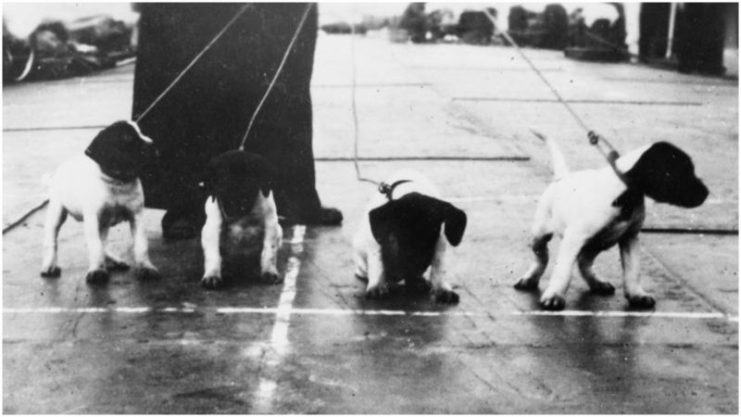
The commandant of the camp was a notorious drunk, but fortunately he was a pleasant and pliable man when inebriated. One night, when the commandant was heavily drunk on sake, Williams successfully persuaded him to register Judy as a camp prisoner. Her POW name in the official records was 81A Gloegoer Medan – and Judy thus became the only animal in WWII to be registered as an official prisoner of war.
Judy not only did her best to protect the men in the camp physically, but she also provided a much-needed psychological and emotional boost for them. With her optimistic presence and wagging tail, she helped to keep morale up in a horrendously depressing and bleak environment. Williams in particular credited her with his survival, saying that simply looking into her eyes every morning gave him the will to keep going and stay alive.
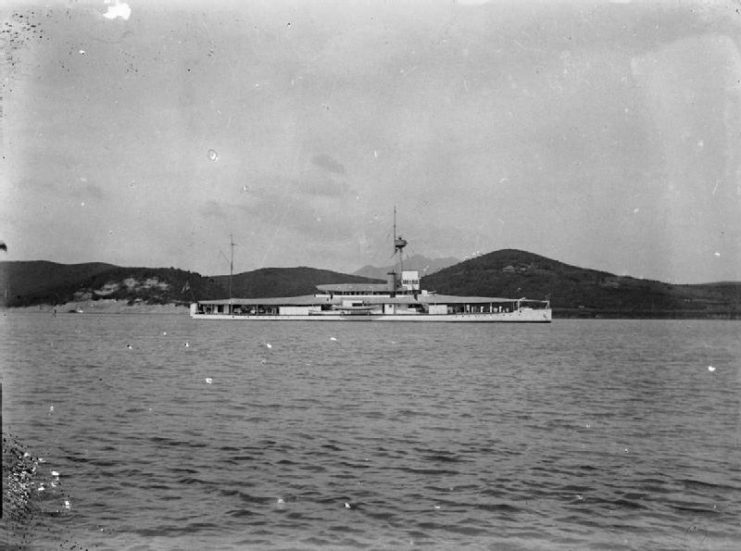
Change came in June 1944 when the prisoners were transferred out of the camp and taken onto the ship Harukiki Maru, formerly SS Van Warwyk. Animals were not allowed on board, but Williams trained Judy to hide in an empty rice sack and stay silent, and in this way he managed to get her onto the ship without the guards knowing.
Harukiku Maru was torpedoed on 26 June 1944 and as the ship started to sink, Williams pushed Judy out of a porthole into the ocean before making his way off the ship as well. Over five hundred people ended up drowning, and Williams did not know if Judy had survived.
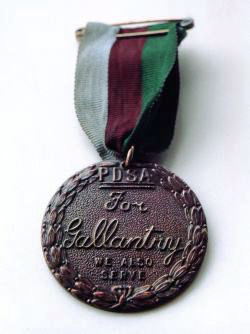
Judy had not only survived, however, but she also had helped save drowning men by directing them to floating debris to which they could cling or by allowing them to cling to her while she swam. Unfortunately, freedom was not yet in sight for the brave dog. She and the other survivors were recaptured and sent to yet another prison camp.
There was a silver lining to this cloud for Judy and Williams at least, for they were reunited at this new camp. Life in the camp was harsh though, and the men were forced to work long, grueling hours cutting a track through the jungle for a Japanese rail line. Judy again proved invaluable, alerting the men to the presence of dangerous animals like snakes, tigers and elephants.
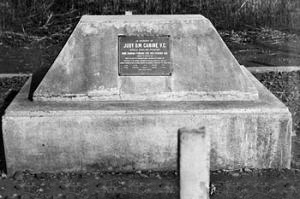
Read another story from us: THEO – The Dog Who Received The Animal Equivalent Of The Victoria Cross
The prisoners were finally freed when the camp was liberated in early 1945. Williams took Judy back to the UK with him, and she was greeted with a hero’s welcome. She was awarded the Dickin Medal – the animal equivalent of the Victoria Cross – in May 1946, and Williams was awarded the White Cross of Saint Giles.
Judy stayed with Williams for the rest of her life. She unfortunately contracted cancer at the age of thirteen and passed away in 1950. She will always be remembered as a remarkable canine hero of WWII.
![Judy receiving her PDSA Dickin Medal in 1946 [Photo by PDSA] Judy receiving her PDSA Dickin Medal in 1946 [Photo by PDSA]](https://www.warhistoryonline.com/wp-content/uploads/sites/64/2019/01/judy-receiving-her-pdsa-dickin-medal-in-1946-photo-by-pdsa.jpg)